

Harry Gainsford Payne’s amazing group of medals will be sold on Tuesday 28th November 2023. The collection is estimated at £2,000 - 3,000.
10/11/2023
Medals by their nature tell the story of someone’s life, from the theatres of war they have served in, to the organisations they have been a part of. Occasionally you find a gallantry medal, a medal that speaks of the recipient’s bravery in the face of extreme adversity and once in blue moon you find a group of medals to an individual that the circumstances of their awarding seem so unbelievable they appear to have been lifted from the pages of a Hollywood film script. This is one such medal group.
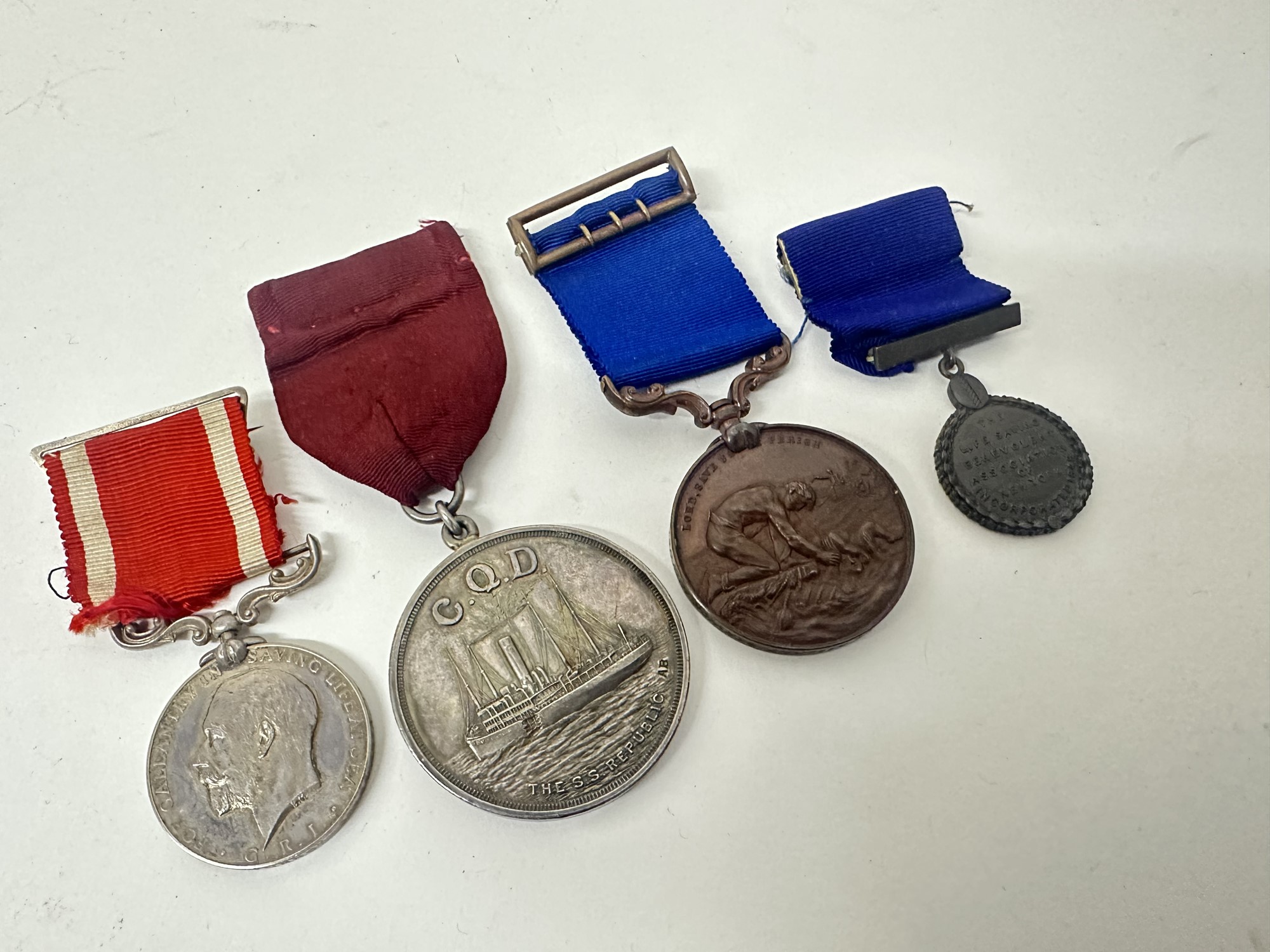
Back at the turn of the 20th century, crossing the Atlantic was not the simple 8 hour trip on an aircraft that it is today, it took five days or more and often in a perilous sea fraught with danger, ice bergs, and all that mother nature could throw at you. It was into this dangerous world that Harry Gainsford Payne was thrown.
According to family legend, Londoner Harry fled to Liverpool after the a horse he had borrowed was fatally wounded and he was too afraid to confront its owner! In Liverpool he joined the merchant navy, and so began his life at sea.
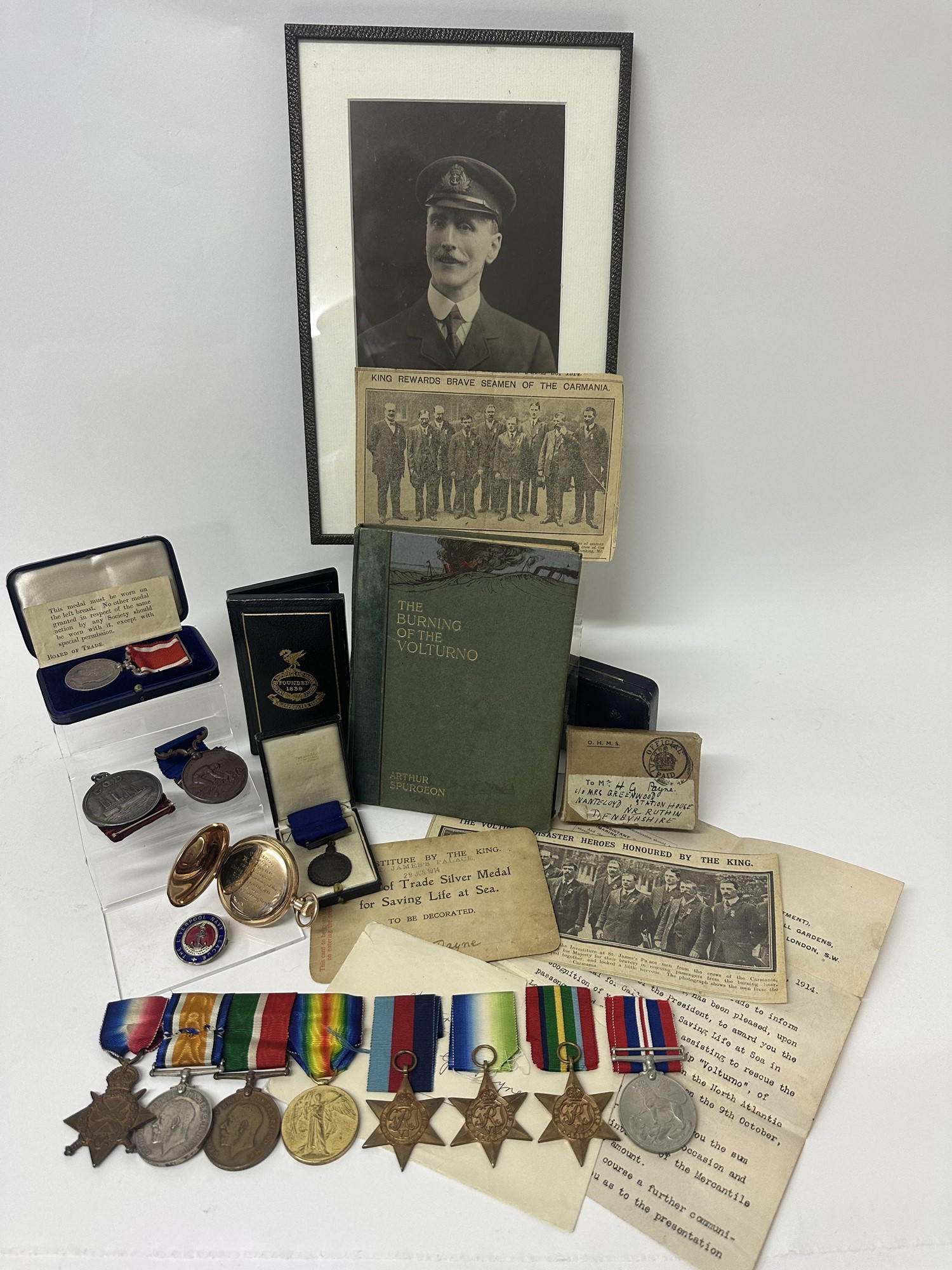
On 23rd January 1909 the 32 year old Payne was serving as a steward aboard the White Star Line ship the SS Baltic, when a C.Q.D. (come quick danger) distress message was received from another White Star Line ship, the RMS Republic. The Republic had just been rammed in thick fog by an Italian ship the SS Florida. Upon receiving the distress signal at 6am, the Baltic steamed the 64 miles to the site of the collision to rescue the passengers from the stricken ship.
The 64 mile trip turned into a 200 mile epic, as the Baltic zigzagged the area unable to find the stricken ships, finally located the crash site at 7pm that evening. Whilst the Baltic searched for the ships, the passengers onboard the Republic were transferred from to the less damaged Florida, with the Baltic finally rescuing the 1700 passengers and crew of the Republic. Miraculously only four sailors and two passengers were killed during the accident. The accident also marked the first time that wireless telegraphy played a role in saving lives at sea. The SS Republic finally succumbed to the damage it sustained in the collision, sinking on 24th January 1909. Its rumoured cargo included gold destined for the Tsar of Russia, a five tonne shipment of American gold coins and funds destined for victims of the Messina earthquake. A considerable haul valued at $100 million dollars in todays money. For his part in the rescue Harry Payne was awarded the C.Q.D. Gallantry medal.
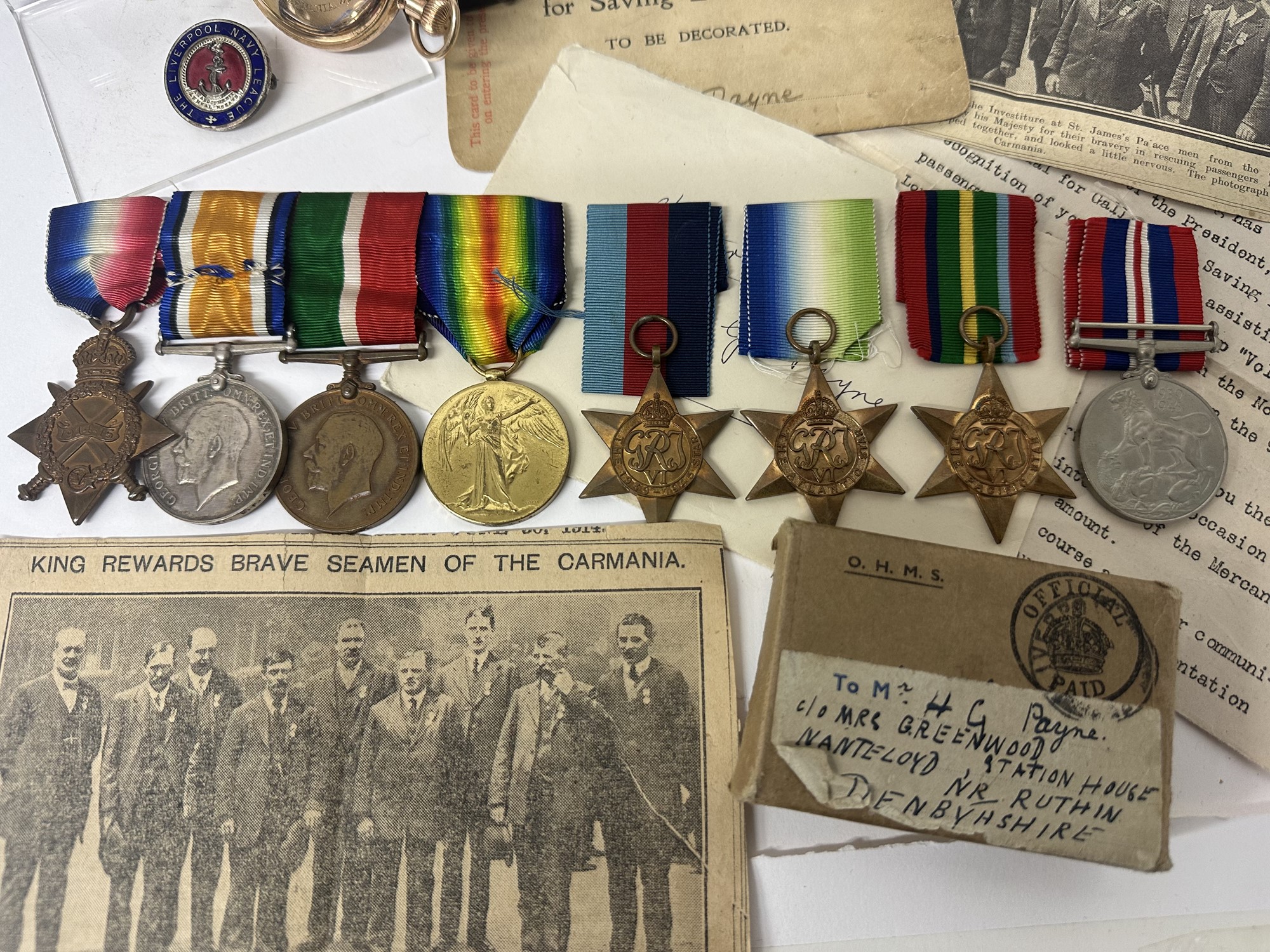
Four years after the Republic crash, Payne was one again serving as a steward, this time on the Cunard Liner the SS Carmania. It was at this time he was thrust into danger once more, with his acts of bravery on the 10th October 1913 earning him multiple awards for his gallantry.
The SS Volturno was sailing in the North Atlantic in October 1913, when its cargo of flammable chemicals ignited during a gale. The subsequent fire caused an explosion, with the inferno spreading further to the ships coal bunkers, eventually cutting power to the fire pumps. The situation was desperate, and the SOS distress call was given. Harry Payne’s ship the SS Carmania was the first to arrive at the scene. In the meantime the striken Volturno launched several lifeboats, which were either capsized or smashed by the Voltuno’s own hull, leaving no survivors.
It was into this scene of desperation that Harry Payne found himself, in a gale, with the burning Voltuno and the shattered remains of its lifeboats all around. He and nine others from the Carmania were lowered into the wild sea in a rowing lifeboat and for 3 hours the brave men of the Carmania battled to reach the wreck of the Voltuno. When they eventually returned to their own ship, 7 of their 10 oars were lost and the crew was exhausted. As the sea mercifully began to calm, the Carmania and the other ships that had joined the rescue began to pick up the survivors, with 521 crew members and passengers rescued. Sadly 135 mostly women and children perished but had it not been for the efforts of Harry Payne and his fellow crew then the death toll would have been much higher.
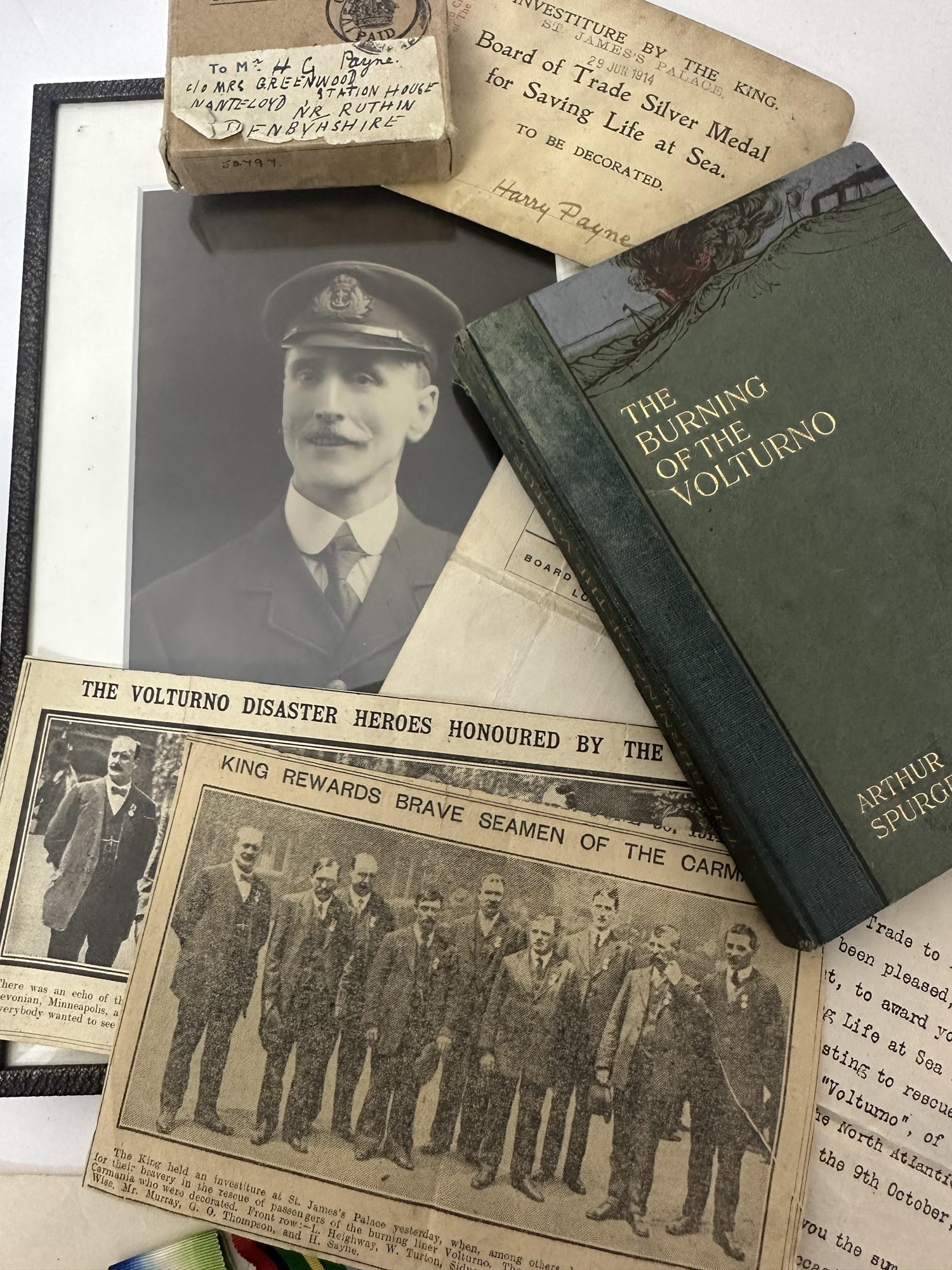
His extreme gallantry was recognised with the awarding of the Sea Gallantry medal. The medal presented to him by King George V at St James’s Palace in 1914. He was further recognised with the awarding of The Liverpool Shipwreck and Humane Society medal and was even awarded a gold plated pocket watch by the catering department of his own ship! Whilst on the other side of the Atlantic The Life Saving Benevolent Association of New York awarded him a bronze medal minted by Tiffany & Co.
As the First World War broke out Harry Payne’s life at sea continued, with him serving as a steward for the Merchant Fleet Auxiliary, adding a 1914 - 15 Star, British War medal, Mercantile Marine War medal and Victory medal to the four gallantry medals he had already been awarded. During the Second World War despite being the ripe old age of 62 at the start of the conflict, Payne once again served, adding the 1939 - 1945 Star, Atlantic Star, Pacific Star and War medal to his splendid array of medals.
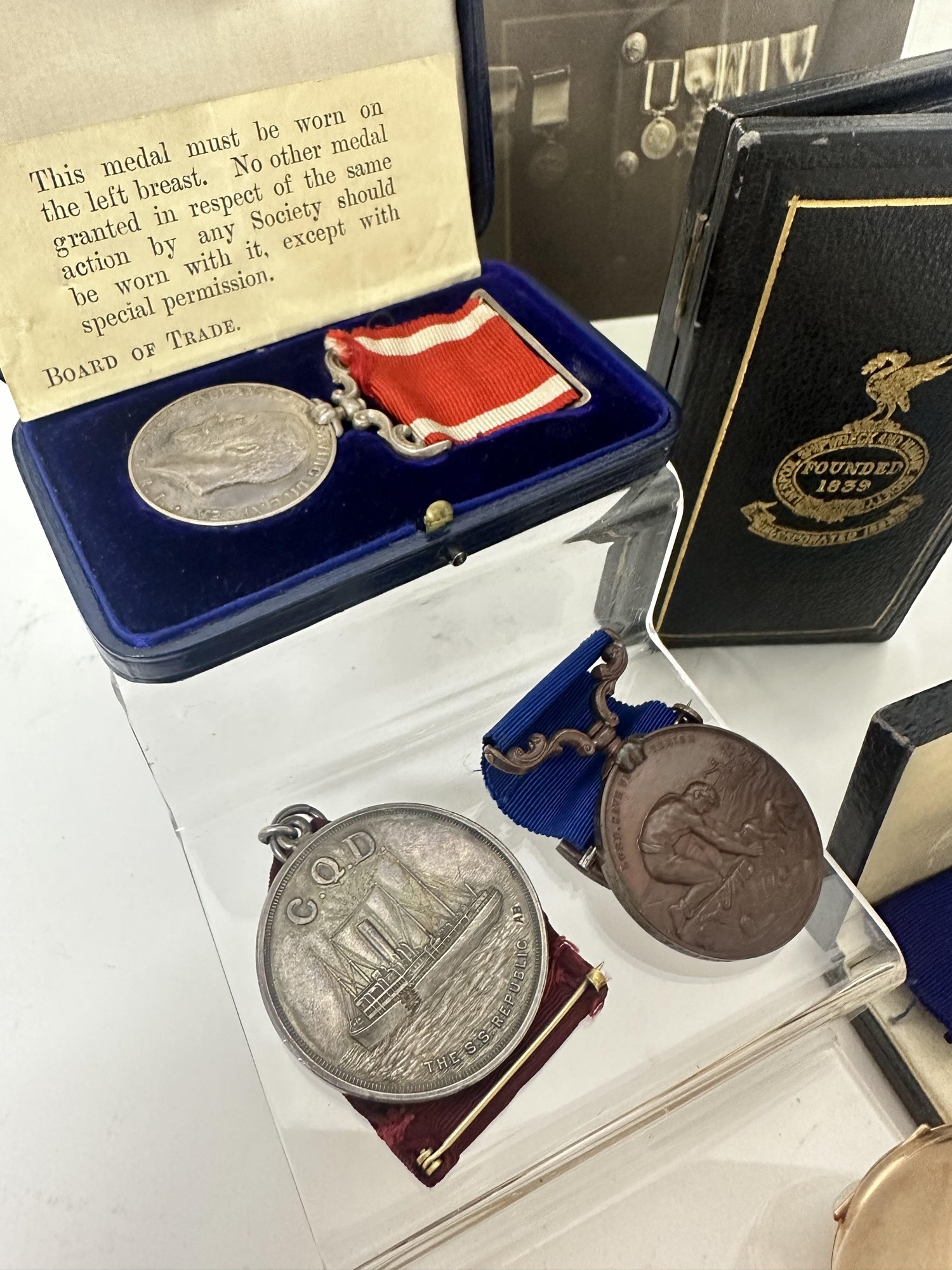
Included along with the medals themselves is the gold plated watch he was awarded following the Volturno rescue, various period newspaper clippings, a photograph of him wearing just a few of his decorations and a copy the book ‘The Burning of the Volturno.
“Reclaim, Recycle, Reuse” is the motto of Antiques by Design’s founder and designer Guy Chenevix-Trench.
21/11/2024
A very rare slice of wedding cake from the marriage of Queen Elizabeth II and Prince Philip has sold at auction for £2,200.
06/10/2024
An important pair of oil paintings by Edward Dayes (1763-1804) are to appear at auction for possibly the first time in their history; they will be sold in Reeman Dansie’s Royalty, Fine Art & Antiques sale on Wednesday 6th November.
22/10/2024